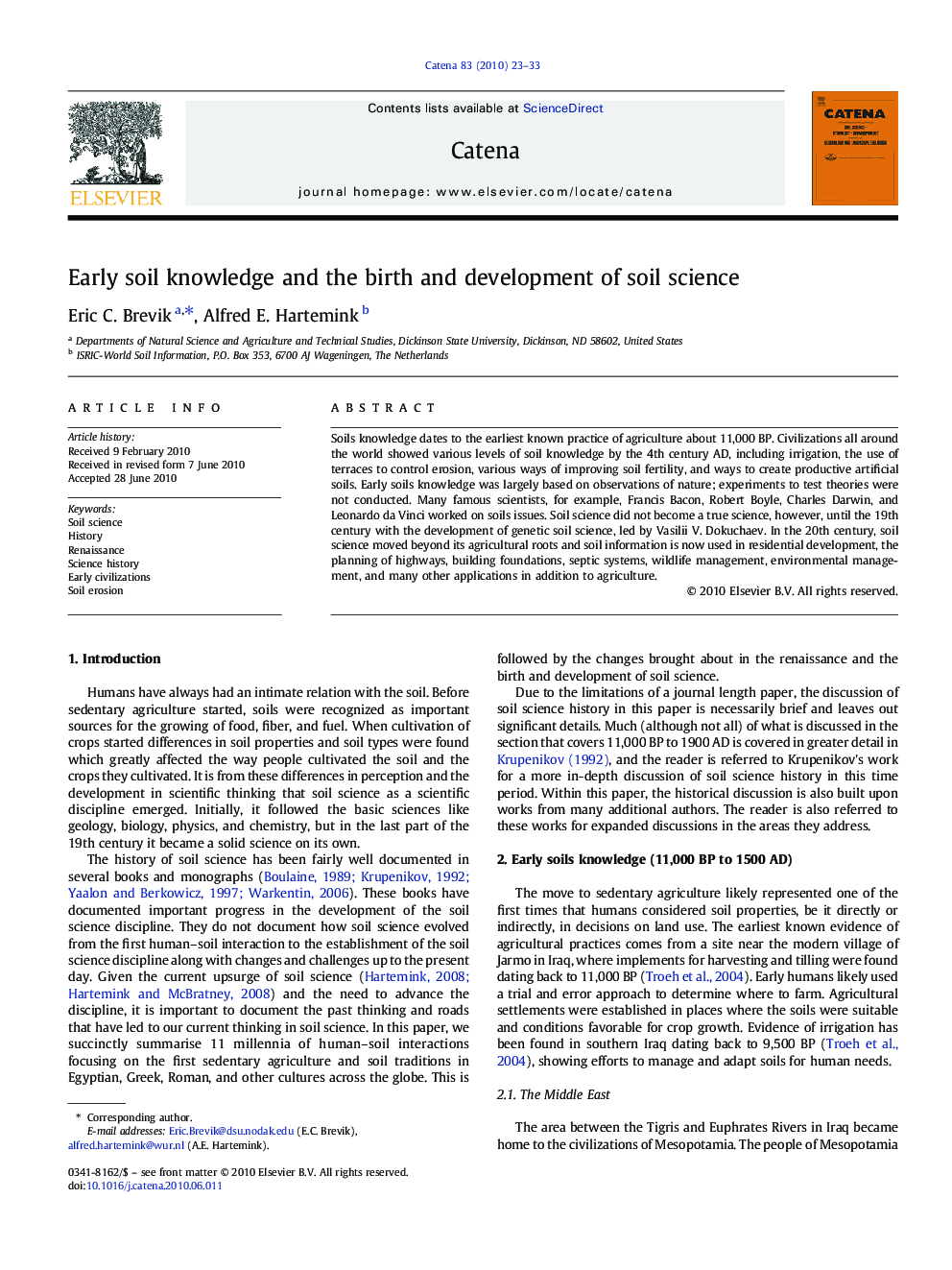| Article ID | Journal | Published Year | Pages | File Type |
|---|---|---|---|---|
| 4572128 | CATENA | 2010 | 11 Pages |
Soils knowledge dates to the earliest known practice of agriculture about 11,000 BP. Civilizations all around the world showed various levels of soil knowledge by the 4th century AD, including irrigation, the use of terraces to control erosion, various ways of improving soil fertility, and ways to create productive artificial soils. Early soils knowledge was largely based on observations of nature; experiments to test theories were not conducted. Many famous scientists, for example, Francis Bacon, Robert Boyle, Charles Darwin, and Leonardo da Vinci worked on soils issues. Soil science did not become a true science, however, until the 19th century with the development of genetic soil science, led by Vasilii V. Dokuchaev. In the 20th century, soil science moved beyond its agricultural roots and soil information is now used in residential development, the planning of highways, building foundations, septic systems, wildlife management, environmental management, and many other applications in addition to agriculture.
